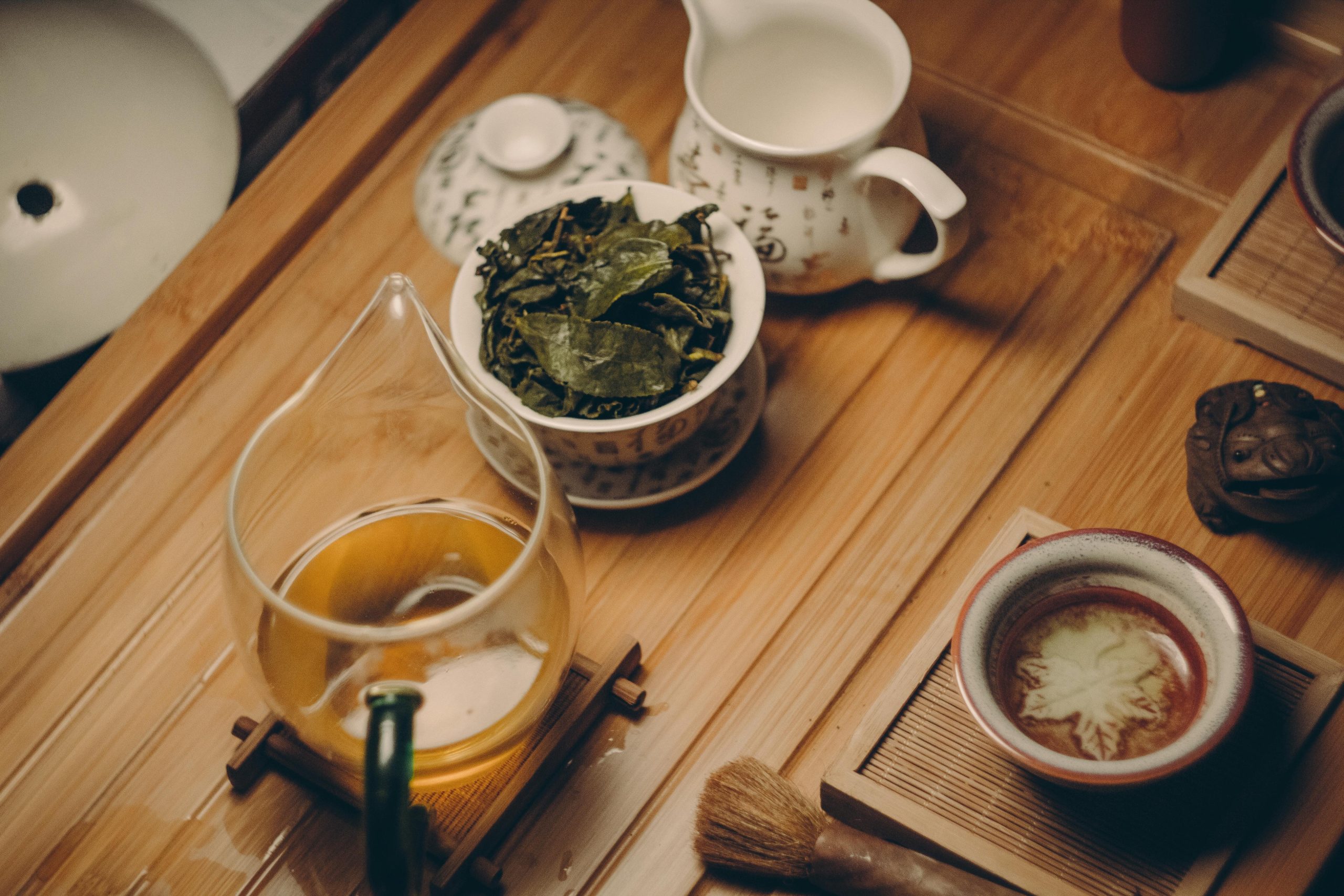Table of Contents
![]()
Matcha, a finely ground powder of specially grown and processed green tea leaves, has gained popularity worldwide for its vibrant color, unique flavor, and numerous health benefits. This guide explores matcha’s rich history, its various health benefits, and provides a range of recipes to incorporate this versatile ingredient into your daily routine.
History of Matcha
Origins
The story of matcha begins in China, where the practice of powdered tea dates back to the Tang Dynasty (618-907 AD). Early Chinese tea drinkers would steam and dry tea leaves before grinding them into a powder. This powdered tea was used in a method similar to modern matcha, though it was not yet the same product we know today.
Matcha made its way to Japan during the Song Dynasty (960-1279 AD), brought by Zen Buddhist monks who were impressed by its stimulating and calming effects. The Japanese embraced the practice and refined it over time, leading to the development of matcha as it is known today.
Development in Japan
In Japan, matcha became integral to Zen Buddhist practices. Monks used it to stay awake during long meditation sessions, benefiting from its calming yet alerting effects. By the 15th century, the Japanese tea ceremony, known as “chanoyu” or “sado,” emerged. This ritualistic preparation and consumption of matcha became a symbol of Japanese culture and artistry, emphasizing mindfulness and the appreciation of simplicity and beauty.
Modern Era
In recent decades, matcha has experienced a resurgence in popularity beyond Japan. Its vibrant green color and health benefits have caught the attention of health enthusiasts and chefs worldwide. From cafes in New York to smoothie bars in Sydney, matcha has become a global phenomenon, appreciated for both its taste and its versatility.
Benefits of Matcha
Nutritional Value
Matcha is renowned for its impressive nutritional profile. Unlike traditional green tea, where the leaves are steeped and then discarded, matcha involves consuming the entire leaf in powdered form. This means you get a concentrated dose of nutrients. Matcha is rich in antioxidants, particularly catechins, which are known to combat oxidative stress and reduce inflammation. It also contains vitamins such as vitamin C and minerals like selenium, chromium, zinc, and magnesium.
Health Benefits
- Boosts Metabolism and Aids in Weight Loss: Matcha contains a unique combination of caffeine and catechins that can increase metabolism and enhance fat burning. Some studies suggest that it can help with weight management when combined with a healthy diet and exercise.
- Enhances Mental Clarity and Focus: The caffeine in matcha provides a more stable and sustained energy boost compared to coffee. Coupled with L-theanine, an amino acid found in matcha, it promotes enhanced focus and a sense of calm without the jitteriness commonly associated with caffeine.
- Supports Cardiovascular Health: The antioxidants in matcha, particularly epigallocatechin gallate (EGCG), have been linked to lower blood pressure and reduced risk of heart disease. Regular consumption may contribute to improved heart health.
- Detoxification Properties: Matcha has been praised for its detoxifying effects. The chlorophyll in matcha helps to eliminate toxins and heavy metals from the body, promoting overall well-being.
Comparison to Other Teas
While matcha is made from green tea leaves, its preparation method and consumption of the entire leaf differentiate it from regular green tea. This results in a higher concentration of antioxidants and nutrients in matcha. Compared to coffee, matcha provides a steadier source of energy and fewer side effects like anxiety or crashes.
Preparing Matcha
Traditional Preparation
To prepare matcha traditionally, you’ll need a few essential tools: a bamboo whisk (chasen), a matcha bowl (chawan), and a bamboo scoop (chashaku). Here’s a step-by-step guide:
- Sift the Matcha: To prevent clumping, sift 1-2 teaspoons of matcha powder into the bowl.
- Add Hot Water: Heat water to about 175°F (80°C). Pour approximately 2-3 ounces of water into the bowl with matcha.
- Whisk: Using the bamboo whisk, briskly whisk the matcha in a zigzag motion until a frothy layer forms on the surface.
- Serve: Enjoy immediately for the best flavor and texture.
Modern Methods
In addition to the traditional method, matcha can be incorporated into various modern beverages:
- Matcha Smoothie: Blend 1 teaspoon of matcha powder with 1 banana, 1 cup of spinach, 1 cup of almond milk, and a handful of ice cubes for a nutritious and energizing smoothie.
- Matcha Latte: Whisk 1 teaspoon of matcha powder with 2 ounces of hot water. Pour the mixture into a cup with steamed milk (dairy or plant-based) and sweeten to taste.
Matcha Recipes
Classic Matcha Tea
Ingredients:
- 1-2 teaspoons matcha powder
- 2-3 ounces hot water (175°F/80°C)
Instructions:
- Sift the matcha powder into a bowl.
- Add hot water and whisk until frothy.
- Serve immediately.
Matcha Latte
Ingredients:
- 1 teaspoon matcha powder
- 2 ounces hot water
- 8 ounces steamed milk (dairy or plant-based)
- Sweetener of choice (optional)
Instructions:
- Whisk matcha powder with hot water until frothy.
- Pour into a cup with steamed milk.
- Sweeten as desired.
Matcha Smoothie
Ingredients:
- 1 teaspoon matcha powder
- 1 banana
- 1 cup spinach
- 1 cup almond milk
- Ice cubes
Instructions:
- Blend all ingredients until smooth.
- Serve chilled.
Matcha Baking Recipes
- Matcha Cookies: Incorporate 1-2 tablespoons of matcha powder into your favorite cookie recipe for a vibrant twist.
- Matcha Cake: Add matcha powder to the dry ingredients of your cake batter for a green tea-flavored dessert.
- Matcha Ice Cream: Mix matcha powder into your ice cream base before churning for a refreshing treat.
Savory Dishes with Matcha
- Matcha-Infused Sauces: Add a teaspoon of matcha to sauces for a unique flavor and color.
- Matcha in Savory Dishes: Incorporate matcha into rice or noodle dishes for a subtle tea flavor.
Choosing and Storing Matcha
Quality Indicators
Matcha quality varies significantly. Ceremonial grade matcha is the highest quality, used in traditional tea ceremonies and characterized by its vibrant green color and smooth taste. Culinary grade matcha is more suited for cooking and baking, often less expensive and slightly more bitter.
Storage Tips
Matcha should be stored in an airtight container in a cool, dark place to preserve its freshness and flavor. Exposure to light, heat, and moisture can degrade its quality. Typically, matcha is best consumed within a few months of purchase.
Conclusion
Matcha is more than just a trendy ingredient; it’s a rich part of cultural history with significant health benefits. From its ancient roots in Japan to its modern-day versatility, matcha offers a range of uses from traditional tea to innovative recipes. By incorporating matcha into your diet, you can enjoy its distinctive flavor and reap its numerous health benefits.
Share This





Be the first to comment